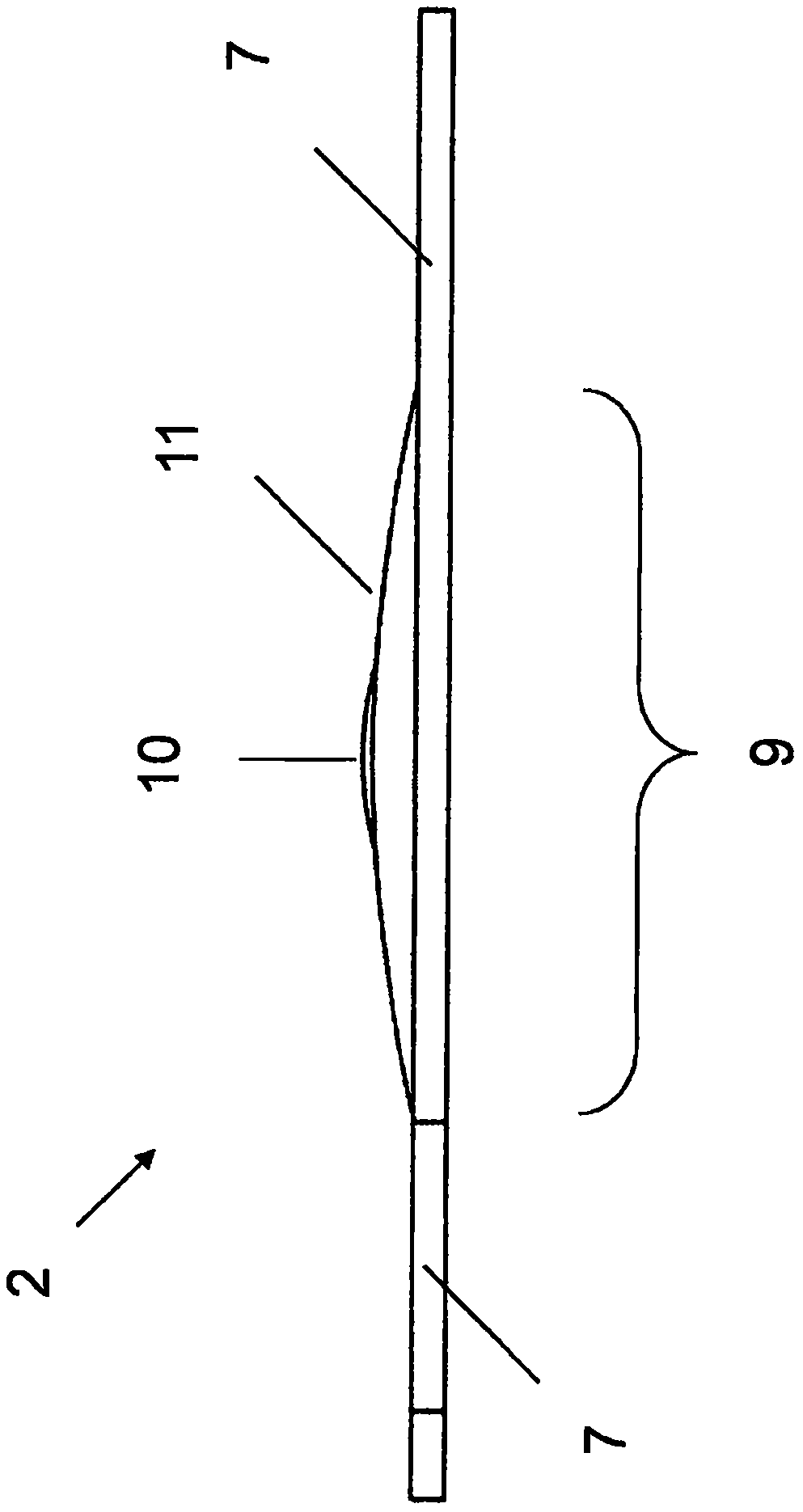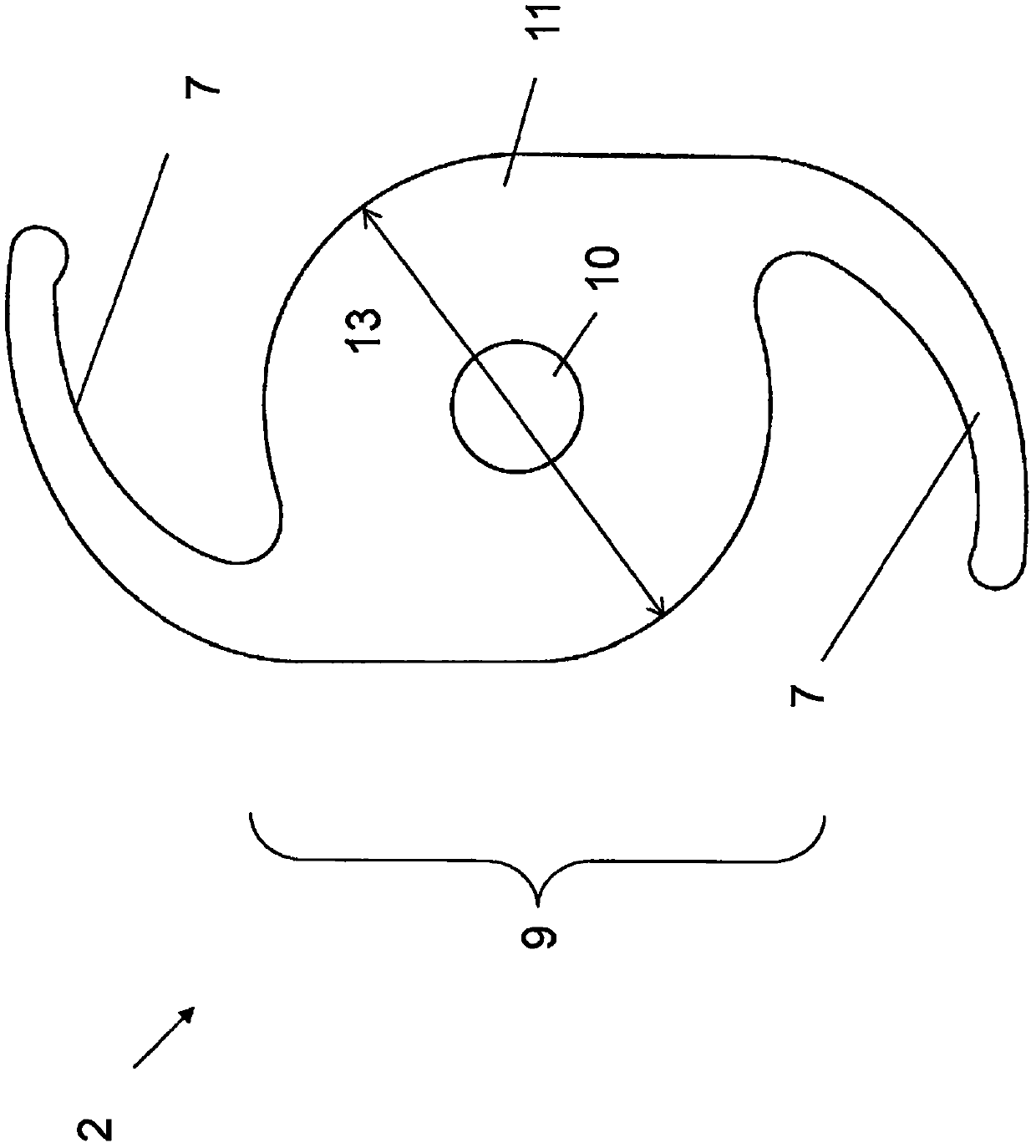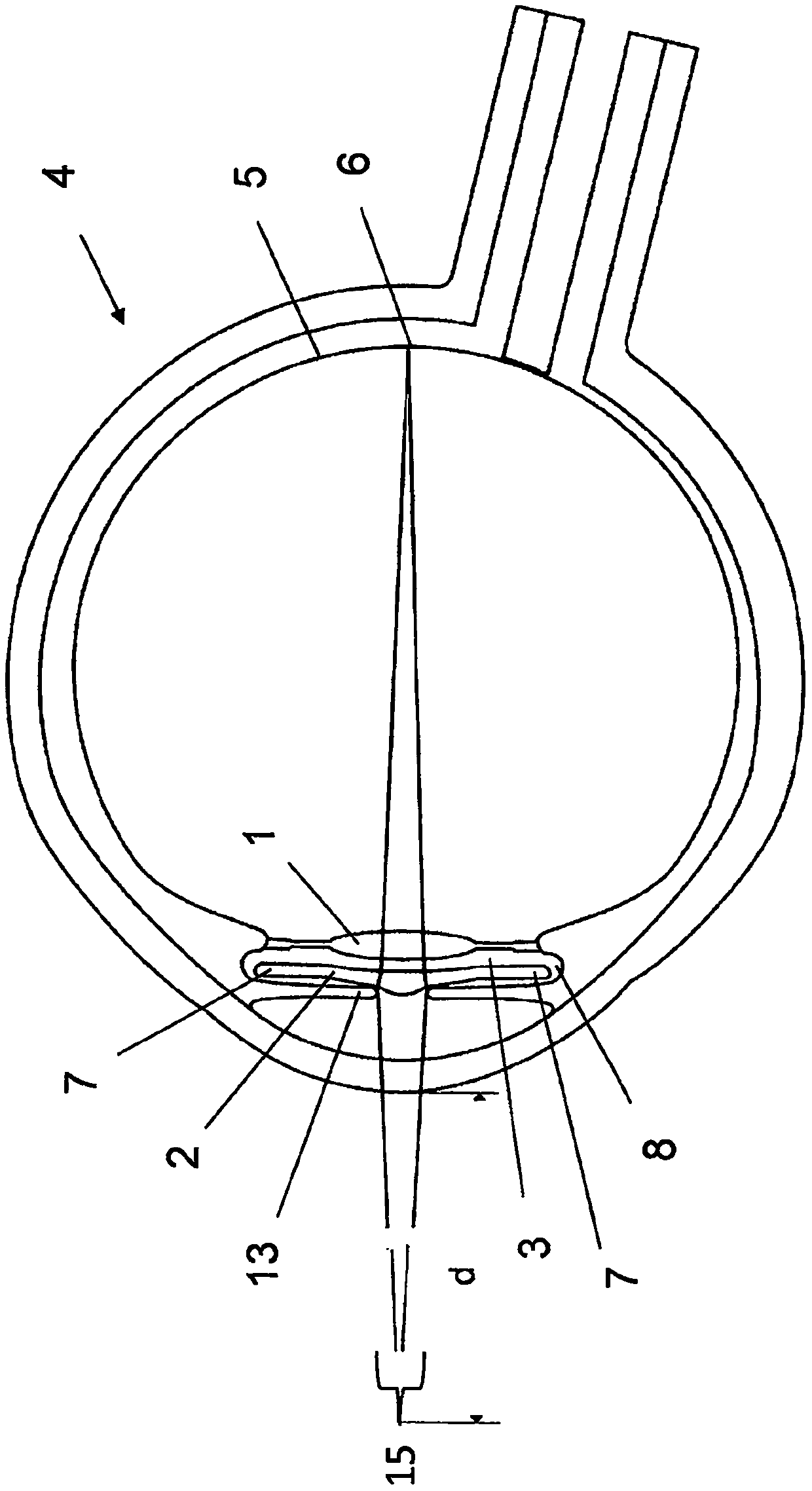Two-stage intraocular lens with magnifying coaxial optic
A technology of intraocular lenses and optics, applied in the direction of intraocular lenses, eye implants, etc., can solve problems such as undesigned
- Summary
- Abstract
- Description
- Claims
- Application Information
AI Technical Summary
Problems solved by technology
Method used
Image
Examples
Embodiment Construction
[0024] Such as Figure 1-2 As described in, a two-stage intraocular lens, IOL, is provided that is made of a foldable soft material such as acrylic or silicone. The secondary IOL 2 includes a haptic 7 for securing and stabilizing it in the patient's eye, and an optically active portion 9 . These haptics can be of any shape known in current IOLs: open C-shape (as in our diagram) or Z-shaped rings, closed rings, or disk-shaped haptics, with or without fenestrations, with or without axial horn.
[0025] The optically active part 9 comprises a central optical part 10 , and a peripheral optical part 11 , which extends around the central optical part 10 . The central optic 10 and the peripheral optic 11 form two distinct but coaxially positioned lenses from a single block. The optically active portion 9 may have a diameter 13 between 4 mm and 10 mm, preferably between 5 mm and 7 mm.
[0026] The central optic 10 is designed to form a positive lens that provides additional refrac...
PUM
 Login to View More
Login to View More Abstract
Description
Claims
Application Information
 Login to View More
Login to View More - R&D
- Intellectual Property
- Life Sciences
- Materials
- Tech Scout
- Unparalleled Data Quality
- Higher Quality Content
- 60% Fewer Hallucinations
Browse by: Latest US Patents, China's latest patents, Technical Efficacy Thesaurus, Application Domain, Technology Topic, Popular Technical Reports.
© 2025 PatSnap. All rights reserved.Legal|Privacy policy|Modern Slavery Act Transparency Statement|Sitemap|About US| Contact US: help@patsnap.com



